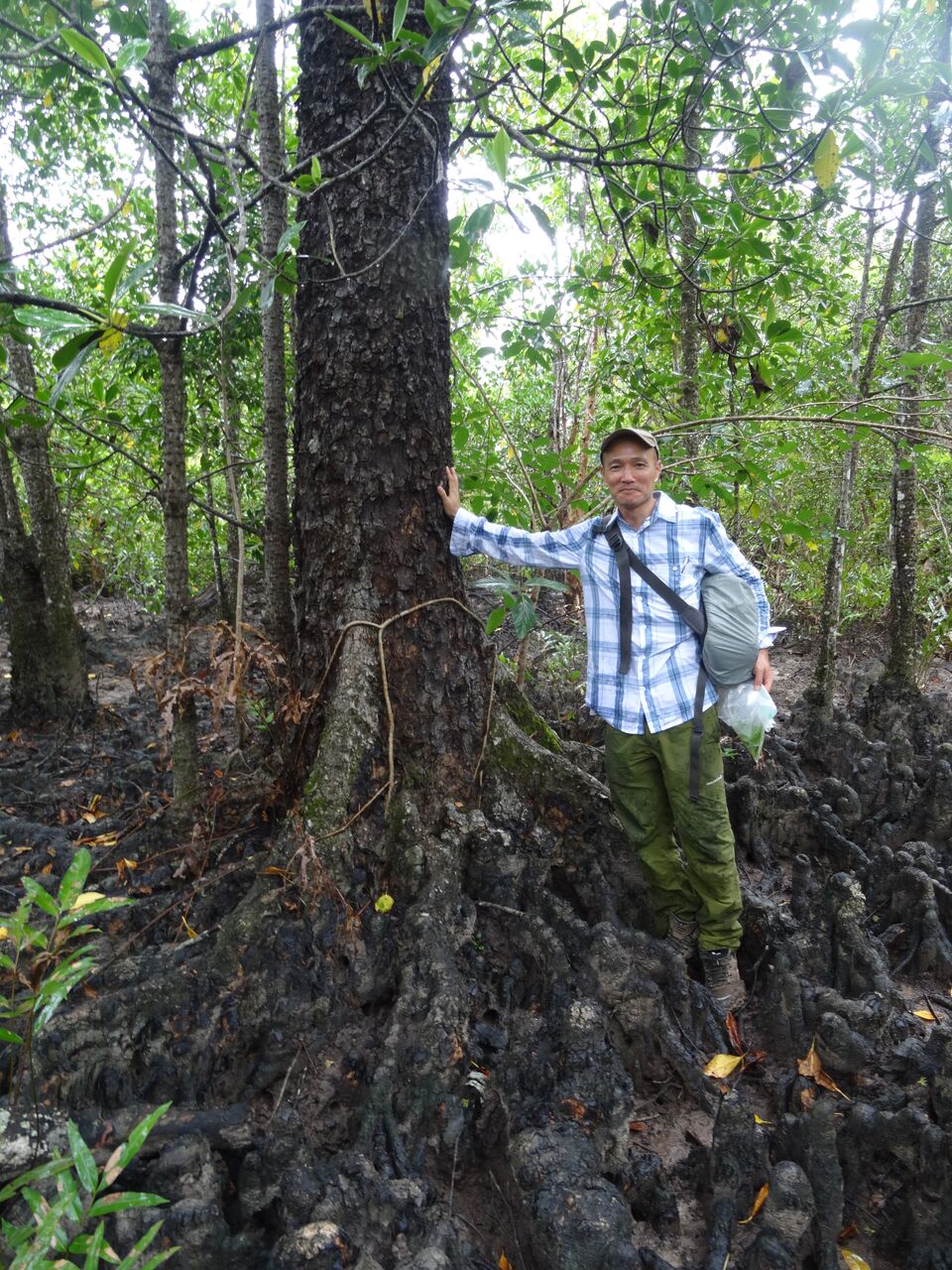Citizen scientist discovers rare mangrove species
An Australian citizen scientist has made an amazing discovery in a busy Cairns’ suburb – finding a mangrove species that’s never been seen before in Australia.

Local explorer, Hidetoshi Kudo made the remarkable discovery of Haines Orange Mangrove (Bruguiera hainesii).
The species is largely unknown in the southern hemisphere, and has never been recorded in Australia. It is listed as rare and endangered on the IUCN Red List, and according to the records, less than 200 of the plants had previously been found on the planet.
Dr Norm Duke, an international mangrove scientist with TropWATER at James Cook University, said Mr Kudo found another 50 of the rare mangroves in Cairns.
“This is perhaps one of the most exciting recent day botanical discoveries for this country.”
“It also highlights our sad lack of basic knowledge about even something as obvious as such sizable tree species. There clearly remain unknown species out there – as this instance clearly demonstrates - right under our very noses,” Dr Duke said.
Dr Duke travelled to Cairns recently, at the request of local botanist, Dr Wendy Cooper and Mr Kudo. Dr Duke’s mission was to confirm the discovery of the seemingly undescribed new mangrove species for Australia, plus to confirm also a 150 km southern extension of another related mangrove species. The two finds were totally unexpected, especially given their location in a busy suburb of Cairns city.
The mature plants were found in dense mangroves bordering Trinity Inlet amongst a populated area with urban bikeways, parklands, controlled drainage channels and cleared telegraph line access pathways.
Dr Duke said it had been thought that the mangroves of Trinity Inlet had been well surveyed and explored. “But, quite obviously, they weren’t! These findings confirm how our botanical knowledge is so blatantly incomplete when someone can stumble across two new species of trees in such a populated place. Who knows what other additional species might be out there?”
After his surveys, Dr Duke confirmed the new species as one previously found in numbers only in Singapore, the Malay Peninsula, and a couple of isolated locations in New Guinea. Dr Duke discovered another occurrence in the Solomons a few years back – but only as a single tree.
The second species, Bruguiera cylindrica, with the extended distribution south, is special also, but it was known only from Cooktown north on Cape York Peninsula. Its discovery in the tidal wetlands of Cairns extend its range south notably by around 150 km.
The surveys also found the population size of the Haines Orange Mangrove might easily be the largest in the world. One tree has a stem diameter of more than 60 cm, which means the species has been there for between 100-200 years. “So these new plants are not new comers! They have simply been missed by all previous surveys!” Dr Duke said.
Dr Duke added that the credit for the new discoveries rests with a single citizen scientist, Mr Kudo. He used a local species guide, the ‘Australia’s Mangroves’ book, and later, the World Mangrove ID app, proving that such primary sources do their job.
“Clearly, it helped to have detailed information available making identification easier for those interested in identifying the species of mangroves present. And, more importantly, to appreciate when something was different and unrecorded! And, that is precisely what happened here. A triumph for citizen science!” Dr Duke said.
Images: Photos of the new mangrove species and citizen scientist, Hidetoshi Kudo can be found here.
More Information
Media Enquiries:
Dr Norm Duke
Professorial Research Fellow, Mangrove Hub
TropWATER - Centre for Tropical Water and Aquatic Ecosystem Research
James Cook University, Townsville
+614 1967 3366
Published:
13, April 2016